By Christopher Rollyson B2B Customers Getting Social Fast: How Marketing and Sales Can Evolve explains how clients/customers are smarter and want a new kind of relationship | The new economics of business reputation
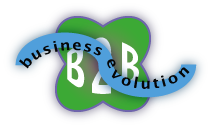 While preparing to launch Social Business Services for B2B Sales in January 2012, I have been engaged in its Ecosystem Audit. I have plumbed online conversations about B2B Sales and Marketing adoption of social business (erstwhile social media). I have been struck by a recurring realization: a large part of Marketing and Sales as we know them is significantly out of alignment with B2B customers. Social business is permeating customer networks throughout the economy and changing customer behavior and expectations. This has created a rare opportunity for B2B marketing and sales people who understand and respond ahead of the market. If I’m right, this could be one of the most important posts you read this year. While preparing to launch Social Business Services for B2B Sales in January 2012, I have been engaged in its Ecosystem Audit. I have plumbed online conversations about B2B Sales and Marketing adoption of social business (erstwhile social media). I have been struck by a recurring realization: a large part of Marketing and Sales as we know them is significantly out of alignment with B2B customers. Social business is permeating customer networks throughout the economy and changing customer behavior and expectations. This has created a rare opportunity for B2B marketing and sales people who understand and respond ahead of the market. If I’m right, this could be one of the most important posts you read this year.
Two quick examples of misalignment: one of Marketing’s underlying assumptions is that it is not economically feasible to have large-scale one-on-one customer conversations, so marketing must achieve scale through secondary research (and remain isolated from the customer). One of Sales’ key assumptions is that it must rely on primary one-on-one prospect/customer communications to drive value. Both of these are increasingly false, so I’ll drill down on them before offering practical recommendations for how Marketing and Sales can explore social business at a new level. Continue reading B2B Customers Getting Social Fast: How Marketing and Sales Can Evolve
By Christopher Rollyson 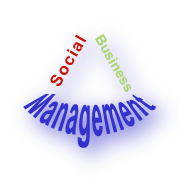 Social Business: How Firm Size Affects Strategy and Execution outlines differences firm size presents in social business initiatives. I recently participated in a discussion in which we debated how size of brand or firm should affect social business strategy, so I’ll dive deeper into the issues here because they are an excellent opportunity to show how strategy and execution are connected and how they differ. I’ll compare how startups and enterprises approach four areas of executing a social business initiative: team, collaboration, learning and scaling. Continue reading Social Business: How Firm Size Affects Strategy and Execution Social Business: How Firm Size Affects Strategy and Execution outlines differences firm size presents in social business initiatives. I recently participated in a discussion in which we debated how size of brand or firm should affect social business strategy, so I’ll dive deeper into the issues here because they are an excellent opportunity to show how strategy and execution are connected and how they differ. I’ll compare how startups and enterprises approach four areas of executing a social business initiative: team, collaboration, learning and scaling. Continue reading Social Business: How Firm Size Affects Strategy and Execution
By Christopher Rollyson Using Social Networks for Recruiting and Sales shows how firms can increase quality of recruits and sales leads while cutting costs.
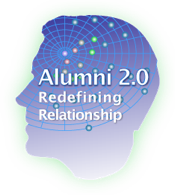 Social networks can help organizations, whether commercial, nonprofit or government, to significantly improve their efficiency in business processes like recruiting, sales and service. This is what we call “Enterprise Process Innovation” because, by using social networks to create and nurture relationships with alumni, your employees can diminish the time required to accomplish tasks within these processes. It’s well known that most alumni, former employees, move to firms that are related to your business (adjacent in the value chain) or complementary in some way. Yes, some move to competitors, but they are usually in the minority. Social networks, by significantly reducing the cost of having relevant, quality conversations, make robust employee-alumni networks actionable as never before. Social networks can help organizations, whether commercial, nonprofit or government, to significantly improve their efficiency in business processes like recruiting, sales and service. This is what we call “Enterprise Process Innovation” because, by using social networks to create and nurture relationships with alumni, your employees can diminish the time required to accomplish tasks within these processes. It’s well known that most alumni, former employees, move to firms that are related to your business (adjacent in the value chain) or complementary in some way. Yes, some move to competitors, but they are usually in the minority. Social networks, by significantly reducing the cost of having relevant, quality conversations, make robust employee-alumni networks actionable as never before.
All organizations (I’ll use “firm” to denote for profit, government and nonprofit) have business processes that benefit from relevant insight and introductions from other people: insight about the situation of the prospect, where the best sources of new recruits, etc. Alumni 2.0 is an evolutionary approach to transforming firms’ relationships with employees. The legacy employment model is utilitarian: firms hire when they need skills and fire when business drops. End of story. Some firms make half-hearted attempts with sub-par email newsletters, but these don’t even begin to tap the potential of vibrant employee-alumni networks.
Here I will lay out an incremental, three-stage model that starts simply, pays dividends quickly and evolves to support more complex business processes over time.
By Christopher Rollyson Why Google Plus Should Be on Executives’ Radar explains Google’s new social network and why it commands attention; it changes the context of social networks.

The launch of Google’s new social network has poignant significance for executives—in predictable and surprising ways. Google+ is exceptionally significant because it is an exciting new social venue with the potential to disrupt, but even more important, it can teach us about how the ecosystem works and how organizations can learn to use it to garner support for things they care about. Here I’ll outline my first impressions and give general guidance for executives to take advantage of Google+’s potential. Continue reading Why Google Plus Should Be on Executives’ Radar
By Christopher Rollyson  Must read post speculating on whether Google will integrate Google+ with Docs to make an enterprise play, disrupting Yammer, Socialtext and other lightweight social enterprise players. This is exactly how to think and why most people miss the true significance of Google+: it’s a social infrastructure into which users will be able to plug many of their other Web activities (such as using Google Docs, Gmail, Payments, etc.). This makes it far more significant that “another social network.” Thx @jowyang #fb Must read post speculating on whether Google will integrate Google+ with Docs to make an enterprise play, disrupting Yammer, Socialtext and other lightweight social enterprise players. This is exactly how to think and why most people miss the true significance of Google+: it’s a social infrastructure into which users will be able to plug many of their other Web activities (such as using Google Docs, Gmail, Payments, etc.). This makes it far more significant that “another social network.” Thx @jowyang #fb
By Christopher Rollyson Steve Jobs Tribute: Behind the Fierce Competitor and Exacting Boss, the ardent desire to serve connected the creator, the visionary and the executive.
 Much has been written about Steve Jobs the creator, the technology visionary and the enterprise leader, but none of these personas entirely get to his essence. Steve Jobs was all these things, par excellence, but what deeply touched and inspired Apple’s customers and what made Steve bearable as a boss was an unconscious yet poignant feeling that he was there to serve people. He flew the flag of The Rest of Us. Unswervingly. Vehemently. Much has been written about Steve Jobs the creator, the technology visionary and the enterprise leader, but none of these personas entirely get to his essence. Steve Jobs was all these things, par excellence, but what deeply touched and inspired Apple’s customers and what made Steve bearable as a boss was an unconscious yet poignant feeling that he was there to serve people. He flew the flag of The Rest of Us. Unswervingly. Vehemently.
Without this higher calling, Steve would have been merely a successful tyrant. However, Steve’s commitment compelled thousands of brilliant and highly intelligent people to work for him and millions of customers to feel that Apple stood for something rare. Beige boxes and senseless software are optimized for profit, but Steve loathed mediocrity and its inherent compromises because they didn’t serve people, they acted at the expense of people. The desire to serve drove Steve Jobs, the creator, the leader and the innovator. Steve would never have led an oil company or a CPG, because he wasn’t a businessman. He wanted to make people’s lives better through technology. That was his love and his life’s work. Perhaps it was felt most palpably through interactions between people and Apple devices. My tribute to Steve honors him for this, in an unusual way…
Continue reading Steve Jobs Tribute: Behind the Fierce Competitor and Exacting Boss
By Christopher Rollyson 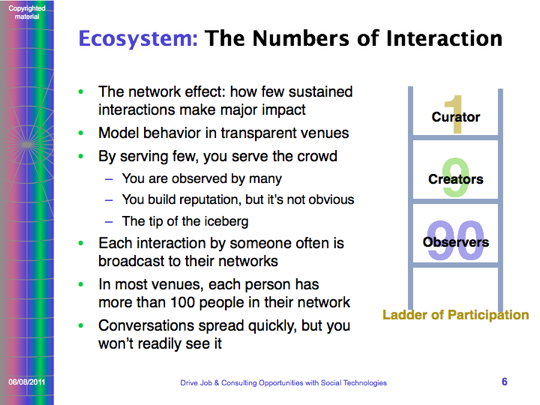
Most of us are familiar with Forrester’s Ladder of Participation, but using it to build engagement and community still escapes most individuals and organizations, so here I’ll offer a short treatment within the context of Facebook [click graphic right to enlarge]. The profound insight is that 90% of people in a social venue observe without interacting. 9% are the creators, they tweet, blog and make themselves known. 1% are curators, they sort and categorize content. Whether you are on LinkedIn, Facebook or authoring a blog, you only hear 10% of the people, but you are affecting 100% of the people. If you don’t know that, you might think your online activities were going unnoticed. Now I’ll turn to how this works in Facebook.
Continue reading Using Facebook’s Ladder of Social Actions to Build Community
By Christopher Rollyson Situational Monopoly Is a 21st Century Profit Maker—Debunking Strategy Sacred Cows
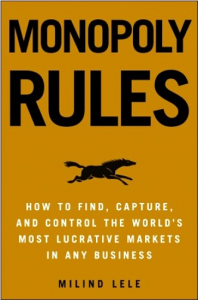 Since the 1990s, I have advised clients in many industries on using disruptive technology to change the rules, and one of the themes that has constantly recurred is companies’ decreasing ability to maintain high profits from product businesses. Products are not as profitable as they used to be. In the Industrial Economy, product life cycles were long because communication was infrequent and poor compared to today, which prolonged ignorance and novelty and product life cycles. It took years for fashions to cross the Atlantic, through the 1980s. Now fashions emerge simultaneously no matter where they originate. Today, novelty is consumed with alacrity, erasing differentiation and price premiums. Since the 1990s, I have advised clients in many industries on using disruptive technology to change the rules, and one of the themes that has constantly recurred is companies’ decreasing ability to maintain high profits from product businesses. Products are not as profitable as they used to be. In the Industrial Economy, product life cycles were long because communication was infrequent and poor compared to today, which prolonged ignorance and novelty and product life cycles. It took years for fashions to cross the Atlantic, through the 1980s. Now fashions emerge simultaneously no matter where they originate. Today, novelty is consumed with alacrity, erasing differentiation and price premiums.
To reference one statistic, in 2011 two billion people access the Internet, one third of the global population. They have access to infinite amounts of information and relationships. They share information about using products and services to create value in terms of their situations, and other people find them and interact. When people interact, they make each other smarter, fast. They expose product shortcomings and opportunities, and millions of other people discover those conversations. Product ignorance is a diminishing quantity. Witness Hollywood “blockbuster” wannabes that die within two weeks of release because individuals panned them online; no matter how many millions in advertising support studios spend, the films never recover. On the flip side, films emerge the same way. YouTube is increasingly used to “pre-release” films.
Monopoly Rules provides some of the missing links. Milind Lele references product overcapacity and new competitors as I often have, but he provides a simple actionable approach to strategy that is very easy to understand and useful. Most businesses are still oriented around physical assets, but the key is to focus on situations, pockets of need, that emerge. If you can satisfy these pockets of need in an unusual way, you can create a monopoly and high profits.
By Christopher Rollyson  “Social media monitoring” is one of the trappings of social business, and most organizations are bewildered by the various approaches they could use to “listen to the ecosystem.” No one argues that a key part of social business governance is determining meaningful metrics to measure the impact of interacting in social venues, but how you use metrics to listen and measure is far from obvious, so here I’ll share some insights I’ve developed based on helping clients through the process of selecting a “listening solution” as well as the process that we have used. Based on these experiences, I have developed an offering by templating the processes, but I won’t go into detail about that here. “Social media monitoring” is one of the trappings of social business, and most organizations are bewildered by the various approaches they could use to “listen to the ecosystem.” No one argues that a key part of social business governance is determining meaningful metrics to measure the impact of interacting in social venues, but how you use metrics to listen and measure is far from obvious, so here I’ll share some insights I’ve developed based on helping clients through the process of selecting a “listening solution” as well as the process that we have used. Based on these experiences, I have developed an offering by templating the processes, but I won’t go into detail about that here.
By Christopher Rollyson  As a speaker at the CIO Forum & Executive IT Summit this past week, I spent two days in focused conversations with enterprise CIOs. The summit is co-sponsored by SIM, TEN and ITEEX and is a relatively intimate setting as most attendees are CIOs, and no press is allowed. We spoke about what was top of mind for CIOs and their experiences with social business. It served as an excellent “current state of the CIO,” and I have some surprising takeaways to share. I’ll also offer a surprising prediction and social business guidance to CIOs. As a speaker at the CIO Forum & Executive IT Summit this past week, I spent two days in focused conversations with enterprise CIOs. The summit is co-sponsored by SIM, TEN and ITEEX and is a relatively intimate setting as most attendees are CIOs, and no press is allowed. We spoke about what was top of mind for CIOs and their experiences with social business. It served as an excellent “current state of the CIO,” and I have some surprising takeaways to share. I’ll also offer a surprising prediction and social business guidance to CIOs.
Having advised CEOs, CIOs, COOs and CMOs on adopting disruptive technology at various stages of my career, I have a broad perspective of the enterprise and executive roles. From the mid 1990s through 2006, I focused on enterprise software and corporate strategy. In 2006, I launched CSRA to advise enterprises on social business strategy, and I’ve been working with CMOs, which has been personally rewarding as I have also led marketing several times in my career. For context, here are a few things that most executives don’t yet appreciate about social business.
|
|
 While preparing to launch Social Business Services for B2B Sales in January 2012, I have been engaged in its Ecosystem Audit. I have plumbed online conversations about B2B Sales and Marketing adoption of social business (erstwhile social media). I have been struck by a recurring realization: a large part of Marketing and Sales as we know them is significantly out of alignment with B2B customers. Social business is permeating customer networks throughout the economy and changing customer behavior and expectations. This has created a rare opportunity for B2B marketing and sales people who understand and respond ahead of the market. If I’m right, this could be one of the most important posts you read this year.
While preparing to launch Social Business Services for B2B Sales in January 2012, I have been engaged in its Ecosystem Audit. I have plumbed online conversations about B2B Sales and Marketing adoption of social business (erstwhile social media). I have been struck by a recurring realization: a large part of Marketing and Sales as we know them is significantly out of alignment with B2B customers. Social business is permeating customer networks throughout the economy and changing customer behavior and expectations. This has created a rare opportunity for B2B marketing and sales people who understand and respond ahead of the market. If I’m right, this could be one of the most important posts you read this year.








